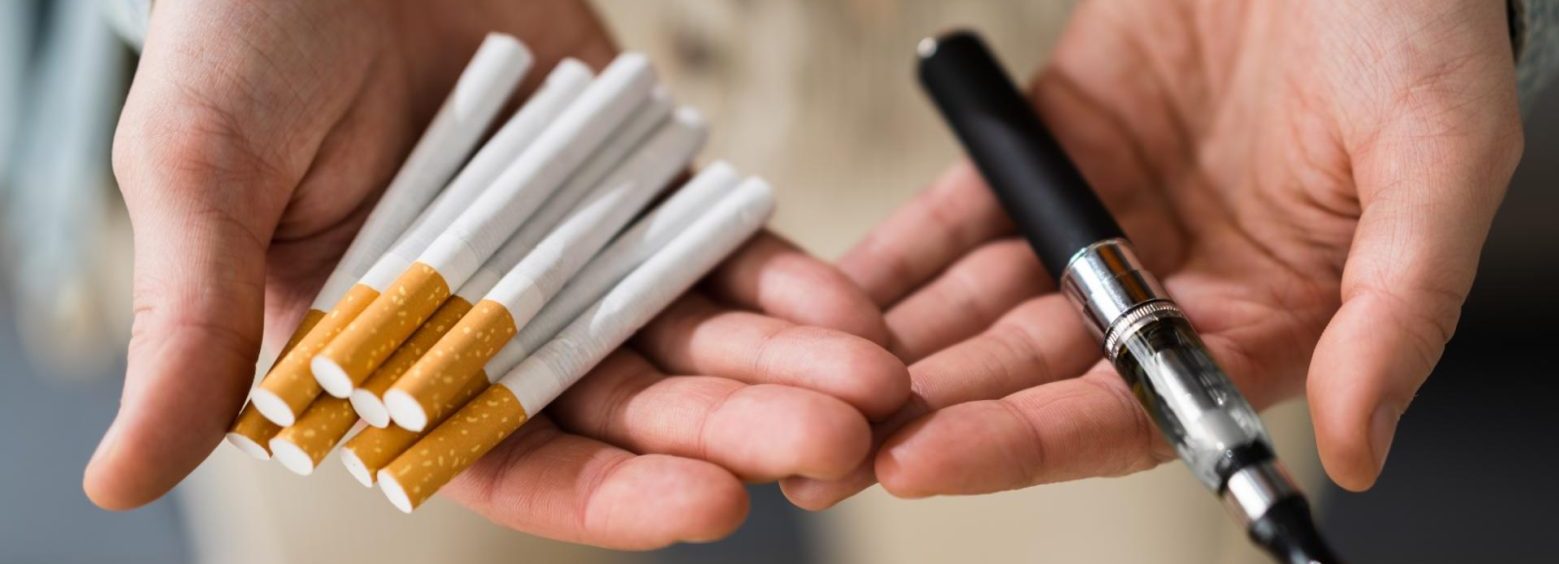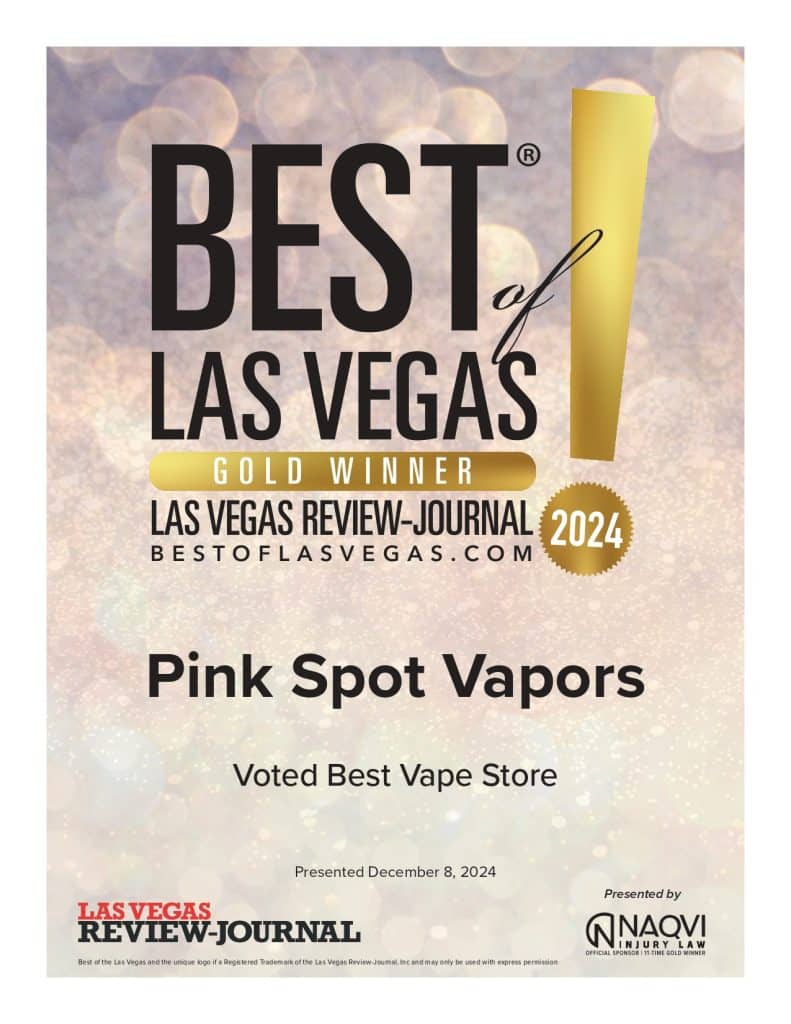- WARNING: This product contains tobacco-free nicotine
- Nicotine is an addictive chemical
- This product is not derived from tobacco
Table of Contents
Subscribe to our newsletter
Recent Posts
Share post:
Table of Contents
From being a specialized substitute for cigarettes, vaping has advanced significantly. It is now a part of a global movement that is tech-driven, flavorful, and inventive. But there is a whole world of history, culture, and innovation worth discovering beyond the vapor clouds and slick gadgets. What are some facts regarding vaping, then? Fun facts about vaping, its history, health benefits, and the innovative technology and community influencing its future will all be covered in this article.
Historical Facts About Vaping
Let’s go all the way back to the vaping history. Inhaling vapor is not a novel concept. Here are a few intriguing historical facts:
- Joseph Robinson submitted the first mechanical vaporizer patent application in 1927. Despite not being commercialized, it established the standard for subsequent concepts.
- Herbert A. Gilbert created a non-tobacco, smokeless cigarette in 1963. His creation, which used flavored air, wasn’t popular at the time.
- 2003: The first contemporary e-cigarette was invented by Chinese chemist Hon Lik. His objective? To assist smokers in quitting after losing their father to a smoking-related disease.
Since then, vaping has quickly grown into a multibillion-dollar industry and a popular way of life for millions of people.
Health-Related Facts About Vaping

While opinions around vaping vary, one thing is clear: for adult smokers who are trying to quit, vaping offers a significantly less harmful alternative to traditional cigarettes.
Understanding how to vape properly can make a big difference in your experience and safety. Once you’re familiar with the basics, you can explore devices and options that suit your needs—your local vape store is a great place to start when you’re ready to try it out or upgrade your gear.
Let’s focus on some of the key health-related facts about vaping, especially in comparison to smoking.
No Combustion = No Smoke
Traditional cigarettes work by burning tobacco, which produces smoke filled with thousands of chemicals, many of which are known carcinogens. This combustion process creates:
- Tar, which clogs your lungs
- Carbon monoxide, which reduces your blood’s ability to carry oxygen
- Harmful byproducts like ammonia and formaldehyde
Vaping, on the other hand, uses heat, not fire, to turn e-liquid into vapor. This fundamental difference means you’re not inhaling smoke or ash.
Instead, you’re inhaling vaporized ingredients like nicotine, vegetable glycerin (VG), propylene glycol (PG), and flavoring ingredients that are commonly used in food and medicine.
So, when people say vaping eliminates many of the harmful byproducts of smoking, they’re referring to this lack of combustion.
Reduced Exposure to Toxins
One of the most often-cited studies in vaping circles comes from Public Health England, which concluded that vaping is around 95% less harmful than smoking.
While the number isn’t meant to downplay potential risks, it highlights the dramatic difference in chemical exposure between the two.
Here’s what vaping doesn’t include:
- No tar buildup in lungs
- No lingering smoke that harms those around you
- Fewer toxic metals and chemicals compared to cigarettes
- Lower risk of developing smoking-related diseases, like chronic bronchitis, emphysema, and certain cancers
Many medical professionals now support vaping as a harm-reduction tool—not something risk-free, but a safer step for adult smokers trying to quit.
Improved Lung and Breathing Function
Numerous ex-smokers who transition to vaping report observable improvements in their respiratory health.
These are practical advantages supported by some clinical data and thousands of testimonies.
Following the transition to vaping:
- Coughing fits often reduce or disappear within weeks
- It feels easier to breathe, especially when working out or going upstairs.
- Reduced production of morning mucus and phlegm
- Some even claim that after years of smoking, their sense of taste and smell improves.
These beneficial adjustments can greatly improve the comfort and enjoyment of daily life for smokers.
Vaping and Quitting Smoking: A Support Tool
One of the most promising roles of vaping is as a support system for smoking cessation. Many smokers struggle with quitting cold turkey or using nicotine patches and gum alone. Vaping offers:
- Behavioral replacement: It simulates smoking’s actual hand-to-mouth motion.
- Custom nicotine control: Over time, users can gradually reduce the amount of nicotine they consume.
- Flavors over tobacco: Making quitting tobacco less stressful and more pleasurable.
Numerous studies have demonstrated that for those attempting to quit smoking, vaping may be more beneficial than nicotine replacement therapy (NRT).
Vapers were almost twice as likely to stop smoking as smokers who only used nicotine patches or gum, according to a UK-based study.
Benefits to the Mind and Emotion
Not to be overlooked is the mental aspect. The fight to stop smoking is psychological as much as physical. Cigarettes are frequently linked by smokers to social bonding, work breaks, and stress relief. Vaping provides a comparable outlet without the same degree of danger.
According to some users, they experience:
- Reduced stress from withdrawal
- Reduced fluctuations in mood
- Increased mental clarity and focus after the toxins from smoking are eliminated
Vaping has emerged as a potent first step in many smokers’ quitting efforts because it enables them to control their cravings in a less dangerous manner.
Cleaner Air and Fewer Secondhand Risks
Smoke from traditional cigarettes contains over 7,000 chemicals, dozens of which are known to cause cancer. These chemicals don’t just affect the smoker—they harm everyone nearby through secondhand smoke exposure.
Vapor, by contrast:
- Doesn’t contain the same harmful byproducts
- Disperses faster than smoke
- Smells less and fades quickly
- Is generally less irritating to bystanders
While it’s still courteous (and sometimes required) to vape in designated areas, it’s a major improvement in shared spaces, especially indoors.
Vaping vs. Traditional Cigarettes
- No lingering smoke smell
- Lower exposure to harmful chemicals
- Adjustable nicotine levels
- Reduced secondhand vapor risks
Still, moderation and smart use are essential, especially for non-smokers and teens. But for many adult smokers, vaping is a step toward better health.
Environmental Facts About Vaping

The health risks associated with smoking may be your first thought, but there is also the significant harm it does to the environment.
Cigarette filters and packaging are among the most prevalent and hazardous types of litter that are produced globally each year.
With an estimated 4.5 trillion thrown into the environment each year, cigarette butts are actually the most littered item on the planet.
They frequently wind up in parks, rivers, oceans, and city streets, where they degrade the aesthetics and contaminate the soil and water with harmful substances like nicotine, lead, and arsenic.
Let’s examine how vaping provides a more environmentally friendly and clean option.
Less Waste and No Butts
Traditional cigarettes are single-use and leave behind an ash trail and filter every time. Vaping, by contrast, doesn’t produce ash or cigarette butts. That alone significantly cuts down on public litter and the burden on cleanup crews.
Vape users don’t need to flick a filter out the car window or drop it into a storm drain. With vaping, the process is self-contained—no ashes, no residue, and no leftover stub that ends up in the gutter.
Device Reusability = Lower Consumption
The durability of the hardware is yet another significant, environmentally beneficial aspect of vaping.
From basic pod systems to sophisticated box mods, the majority of vaping devices are made to last for months or even years with little care.
Rather than smoking a pack of cigarettes every day, vapers:
- Refill e-liquid tanks.
- Coils should be changed every few weeks.
- Recharge batteries rather than throwing them away.
This change from single-use to reusable equipment lowers packaging waste and the ongoing need for manufacturing.
Cleaner Air, Reduced Emissions
Most people are unaware of how cigarette smoke contributes to air pollution. In addition to having thousands of dangerous chemicals, it also pollutes indoor air, lingers in the environment, and causes secondhand and thirdhand smoke hazards.
With vaping:
- There’s no combustion, so harmful particles from burning tobacco aren’t released into the air.
- The vapor disperses quickly and doesn’t cling to furniture, curtains, or skin.
- There’s no passive smoke cloud hanging over shared public areas.
This makes vaping a more considerate choice in public settings, such as parks, cafes, and homes.
More Eco-Friendly Packaging
Bottles and cartridges of e-liquid are becoming more and more recyclable. Nowadays, a lot of ethical vape companies package their goods in:
- Glass or plastic bottles that can be recycled
- Biodegradable packaging materials
- Simple designs to cut down on superfluous packaging
Many vape shops are attempting to further lessen their environmental impact by encouraging sustainable practices and providing recycling drop-offs or advice.
Pro Tip: Prior to discarding vape equipment, always confirm your local recycling regulations. For instance, batteries ought to be disposed of at an authorized e-waste collection facility.
Reduced Carbon Emissions
Huge amounts of resources are needed to produce cigarettes, including transportation, papermaking, chemical processing, and tobacco farming. These all add up to a significant carbon footprint.
Regarding vaping:
- Long-term, fewer raw materials are required.
- There are no pesticides, tobacco leaves, or deforestation.
- Instead of buying single-use packs every day, you buy once and refill.
Degradation of the environment occurs even during the tobacco growing and curing process. Making the switch to vaping can lessen agricultural pollution, water use, and land pressure.
Expert advice: Always dispose of used vape batteries and cartridges at the appropriate e-waste locations.
Fun and Interesting Facts About Vaping

Let’s talk about the cool, eccentric aspects of vaping, which contribute to its current and developing status.
- Countless Tastes: There are over 7,000 distinct e-liquids available, ranging from bourbon and cinnamon roll to bubblegum and mango. Every taste can be satisfied.
- Cloud competitions do exist. Contests known as “cloud chasing” determine who can produce the largest, densest vapor clouds.
- The Oxford Dictionary named “Vape” the Word of the Year for 2014.
- Fan art, tattoos, merchandise, and whole subcultures have all been influenced by vaping.
- Online Communities: Facebook vape groups, YouTube reviews, and Reddit forums all provide advice, product recommendations, and how-to guides for vaping.
Therefore, if you believed vaping was solely about nicotine, you should reconsider. It has evolved into a passion, a pastime, and a way of life for many.
Technological Facts About Vaping
The vaping gadgets of today are sophisticated, stylish, and highly customizable. Since the first cig-a-likes, technology has advanced significantly.
Important Developments:
- Wattage and Temperature Adjustable: You can change the device’s operating temperature to get a more powerful or even hit.
- Bluetooth Integration: To monitor usage or stop overuse, some contemporary vapes connect to your phone.
- Pod Systems & Mods: Users have the option to switch between basic pods and sophisticated box mods that have interchangeable components.
- Nicotine salts: Make vaping more enjoyable for ex-smokers by delivering smoother throat hits and faster nicotine absorption.
Vaping is a customized experience rather than merely a substitute for smoking. Vaping gives you control, whether you’re tech-savvy or just enjoy trying out different flavors.
Economic Facts About Vaping
Making the switch to vaping could significantly alter your financial situation if you’ve ever examined how much you spend each month on cigarettes.
Here are some ways that vaping can be less expensive:
- Cost of a single device: The majority of high-quality vapes last for months or even years.
- Savings on e-liquid: Compared to daily cigarette packs, a $20 bottle can last more than a week.
- DIY options: To further reduce expenses, some experienced users construct coils or mix their own e-liquids.
Global Impact: In 2022, the vaping market was estimated to be worth over $22 billion, and it is still expanding. The manufacturing, distribution, and retail sectors of the industry sustain thousands of jobs.
Not only does patronizing your neighborhood vape store help you, but it also boosts local economies and small businesses.
Social and Cultural Facts About Vaping
Vaping is about the people who use the device, not just what’s in it.
Cultural Changes:
- Socializing without smoking: Compared to smoking, many people feel more at ease vaping in social situations.
- Community-driven growth: Rather than large advertising campaigns, peer-to-peer recommendations have been the main reason why vaping has flourished.
- Media: Music videos, TV series, and even influencer content all feature vaping.
Vape Lounges & Cafes
Similar to coffee shops or hookah lounges, vape lounges have developed into gathering places for people to unwind and converse. They have gaming areas, live music, and tasting bars.
What Are Some Facts About Vaping?
Let’s summarize the best facts about vaping you should know:
- Vaping dates back to the 1920s but only became popular in the 2000s.
- It’s a smoke-free, tar-free alternative to traditional cigarettes.
- Vape clouds are part of a real competition culture.
- It’s more eco-friendly with less waste and pollution.
- The tech is smart, customizable, and always evolving.
- It’s generally more affordable than daily cigarette use.
- It has grown into a global social movement with its own culture.
Final Thoughts: A Modern Habit with Depth
Exploring interesting facts about vaping shows that it’s far more than just an alternative to smoking. It’s innovation in your pocket. It’s a form of expression. It’s a lifestyle embraced by millions across the globe.
Subscribe to Our Newsletter
Subscribe now to keep reading and get access to the full archive.
"*" indicates required fields
























